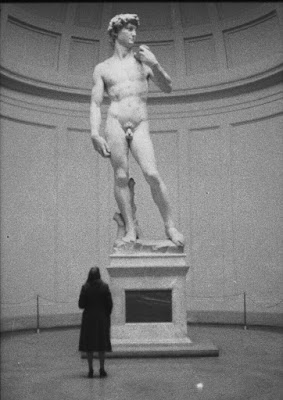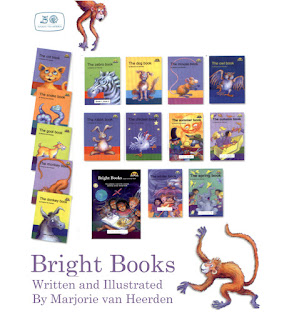- Part 1 – The Early Years
- Part 2 – The Stellenbosch Years (and Chicago, USA)
- Part 3 – The Johannesburg Years
- Part 4 – The Years in Greece
- Part 5 – The First Gordon’s Bay Years
- Part 6 – Over the Next Horizon
- Part 7 – Willy Nilly and Thumper
- Part 8 – Life After Willy Nilly Was First Launched
- Part 9 - ...and the journey continues...
Marjorie's Curriculum Vitae
Writer and Illustrator of Children's Books
Contents
Part 1 – The Early Years
 |
| Hex River Valley - Table grape farms |
Marjorie van Heerden was born at De Doorns in the Hex River Valley near Cape Town in South Africa. She went to school and matriculated at the Rustenberg Girls High School in Cape Town.
 |
| Marjorie - 3 years old |
For one year she followed a degree course in Fine Arts at the University of Stellenbosch, and then switched to the Michaelis School of Fine Arts at the University of Cape Town.
For a further three years she studied Fine Arts, concentrating on sculpture and graphic art under the legendary Katrine Harries, known for her illustrations for children. After university Marjorie entered the advertising industry as a graphic design artist, while practicing portrait sculpting (including commissioned works), painting and other graphic techniques in her free time. At this stage she concentrated mainly on sculpture, lithography and etching.
Part 2 – The Stellenbosch Years (and Chicago)
After her marriage to Johann van Heerden, then lecturer at the Department of Drama at Stellenbosch University, and after travelling (in a VW Kombi Camper, hippie style) and studying in Europe for a year (1975‑76)...

 |
| Stonehedge (England) |
 |
| Delphi (Greece) |
Marjorie started concentrating full-time on her creative art and set up an artist's studio (converted double carriage storage area - large with high ceiling.) behind their Victorian cottage in Stellenbosch in the Cape. In 1977 the Van Heerdens had their first child, a daughter, Alexia. For six months she filled in as head of the graphic section of the Department of Fine Arts at the University of Stellenbosch. Alexia was 3 months old at the time and Marjorie took Alexia with her in a baby rugsack.
 |
| Markus and Marjorie (1980) |
She was already interested in illustrating children's books and subsequently, after the 6 months, Marjorie started concentrating full-time on the illustration of children's books and on bringing up her children. Their second child, a son, Markus, was born in 1980.
 |
| The studio in Stellenbosch |
 |
| Alexia and Markus (1980) |
Soetlemoen
en Nartjie (Sweet Orange and Tangerine),
written by Cecilia Saayman, was the first children’s book she illustrated
(1983).
From 1984 to 1985 the family lived in Chicago USA, where Johann worked as a visiting professor at Northwestern University for one year, after sailing to the USA by ship. There Marjorie made valuable contact with American children's book authors, illustrators and academics. She also attended various conferences and study groups on Children's Literature and Children's Book Illustration in the United States. During one such a conference Marjorie decided that, when back in South Africa, she wanted to contact children's book writers and illustrators and organise a conference.
Shortly after her return to Stellenbosch she was invited to take part in a group exhibition of works by prominent Children's Book Illustrators at the South African Art Society in Cape Town.
She continued with illustrating children's books and, with encouragement from her editor Alida Potgieter, she started writing too. At the same time she contacted local children's book writers and illustrators and started making plans to organise a children's book conference. And eventually it came together:Marjorie was the initiator and one of the main organisers of the international Towards Understanding Children's Book Symposium that was held with 550 delegates at the University of the Western Cape in July 1987. This was the first symposium on children’s literature that was ever held on the continent of Africa.
The Towards Understanding Symposium has led to an awakening to the importance of quality books for children in Southern Africa and as a result a number of smaller symposia have since been organised and held in different parts of the country.
Marjorie was also the initiator and one of the organisers of a Children's Book Festival held in Stellenbosch in July 1988. This too has sparked off similar book festivals around the country.
Part 3 – The Johannesburg Years
In January 1989 her husband, Johann, decided to leave academia and he
accepted a position as a film and television producer and the Van Heerdens
moved to Johannesburg. In 1991 he joined M-Net, a Pay-TV service, as an executive.
In Johannesburg, Penguin (SA) approached Marjorie with the offer to head their
children's books section. She agreed to do this for one year.
Marjorie was a committee member of the Johannesburg Children's Book Group until
1994, and was involved in organising a children's book festival in Johannesburg
in October 1989 - this subsequently became an annual event.
She also served on the steering committee forming a new Johannesburg Children's
Book Forum to focus on the needs of the New South Africa after democratisation
in 1994.

For more than forty years Marjorie has been building up her large specialist library and researching the field of children’s literature, particularly for beginner readers.
 |
| Marjorie's home studio in Linden, Johannesburg. |
She has been very active in promoting children's books by
writing articles for specialist publications and giving talks, lectures and
workshops to audiences ranging from small groups of parents to large gatherings
of teachers, librarians, university lecturers and other specialists in the
field. Her main focus was to help address and support developments in the new
democratic South Africa with specific reference to promoting child and adult
literacy amongst the historically disadvantaged communities.
Besides her own writing, Marjorie van Heerden has illustrated the books of
several other children's book authors, has illustrated many school readers and
has written and illustrated for various children's magazines.
She has published
a number of articles on children's books - all in South Africa. At this time her books have
been published in many African countries and some have been translated into English,
French, German and about twenty African languages.
Marjorie was co-author and the illustrator of Baba's Plan (1990), the first book to be published as
result of a conference organised by Sue Hepker, then of
The Read 
From 1990 to 1996 she compiled (and often illustrated) four pages for children in the monthly Edgars Club Magazine, which had a circulation of over one million - the largest in South Africa.

These fully illustrated books are designed for distribution amongst pre-schoolers and beginner readers in the very poorest communities. Twenty-one titles in this series have already been published by the Ntataise Trust. Marjorie wrote and illustrated all these readers.
These twenty-one titles became the first picture books personally owned by thousands of youngsters. The master copies spread quickly… A colleague of Marjorie's even saw copies of these little self-made books in Nigeria, more than halfway across the African continent!
These A4 “master pages” were distributed across the rural areas in South Africa. The local doctor or police chief or post mistress was persuaded to make available their photocopier to Xerox a free copy for each kid in the class.

In 1997 Nasou Publishers developed and published the whole series in a full-colour version, called the “Bright Books Series”, all conceptualised, written and illustrated by Marjorie van Heerden; the first set of 11 books, containing 36 original stories aimed at Grade One learners was published in 1997. From this developed a second set, four books for Grade Two learners, published in 1998 and a third for Grade Three learners, published in 1999, all written and illustrated by Marjorie. These sets of readers for early learners were scientifically developed to suit the specific cultural and educational needs of the youth of the new democratic South Africa and they cover the Foundation Phase of the new South African school system.
In July 1995 Marjorie received a
scholarship to attend the Highlights
Foundation Writers’
Workshop Symposium at Chautauqua in New York State, USA. Ed Young was her mentor during the Symposium. After her return to
Africa she started developing a completely new technique of illustration, which
she first used in The Zebra and the
Baboon, written by Thomas A. Nevin and published by Garamond Publishers
in 1996.
The original artwork for a number of her books has been shown at various international exhibitions in Europe and elsewhere, including the acclaimed travelling Exhibition Amabhukhu, organised by La Joie par les Livres and opening at the 1999 Bologna International Children’s Book Fair in Italy. Subsequently the exhibition was shown in Canada and in various European capitals. The illustrations for her book Monde’s Present were chosen for this exhibition, together with work from 34 other artists from Africa.
In 1998 Marjorie wrote and illustrated three books for Cambridge University Press for their Cambridge Reading Routes Reading Programme. Subsequently she was asked to art direct the contributions from the other eleven South African writers and illustrators.
















